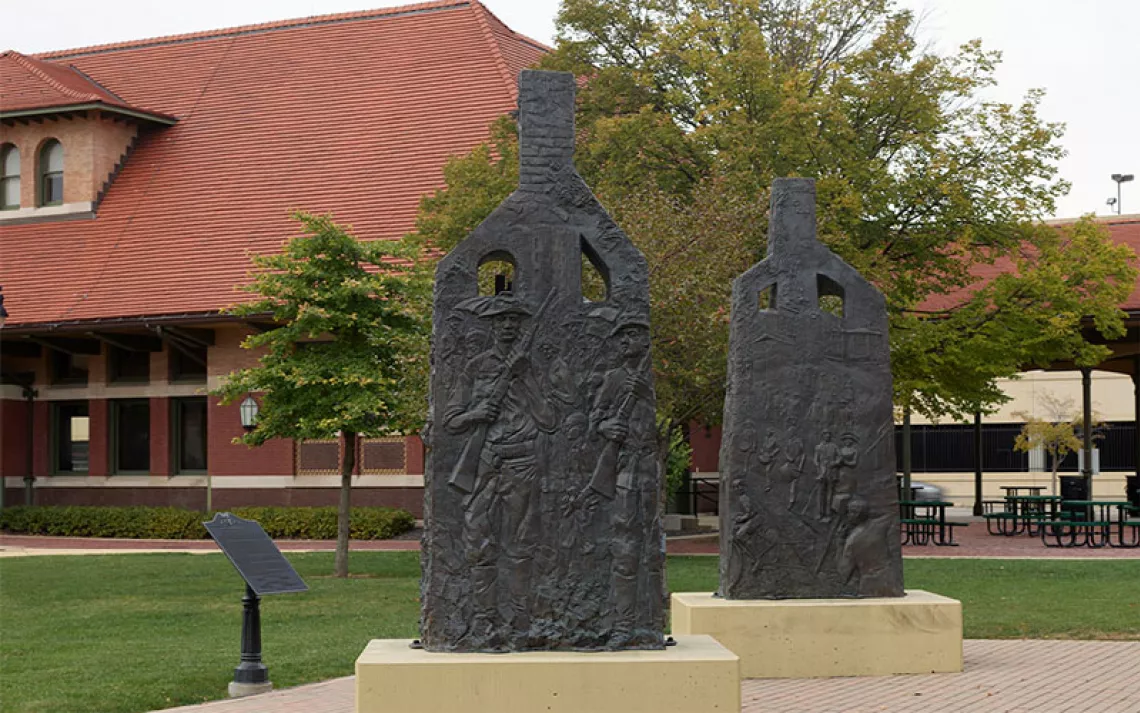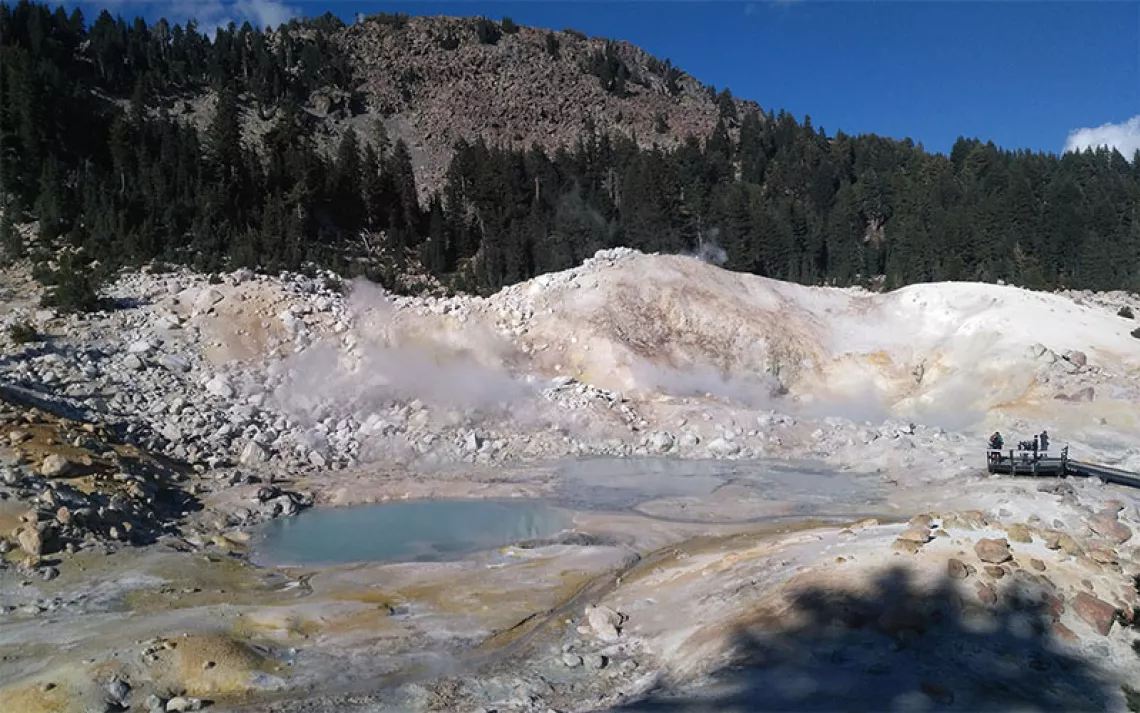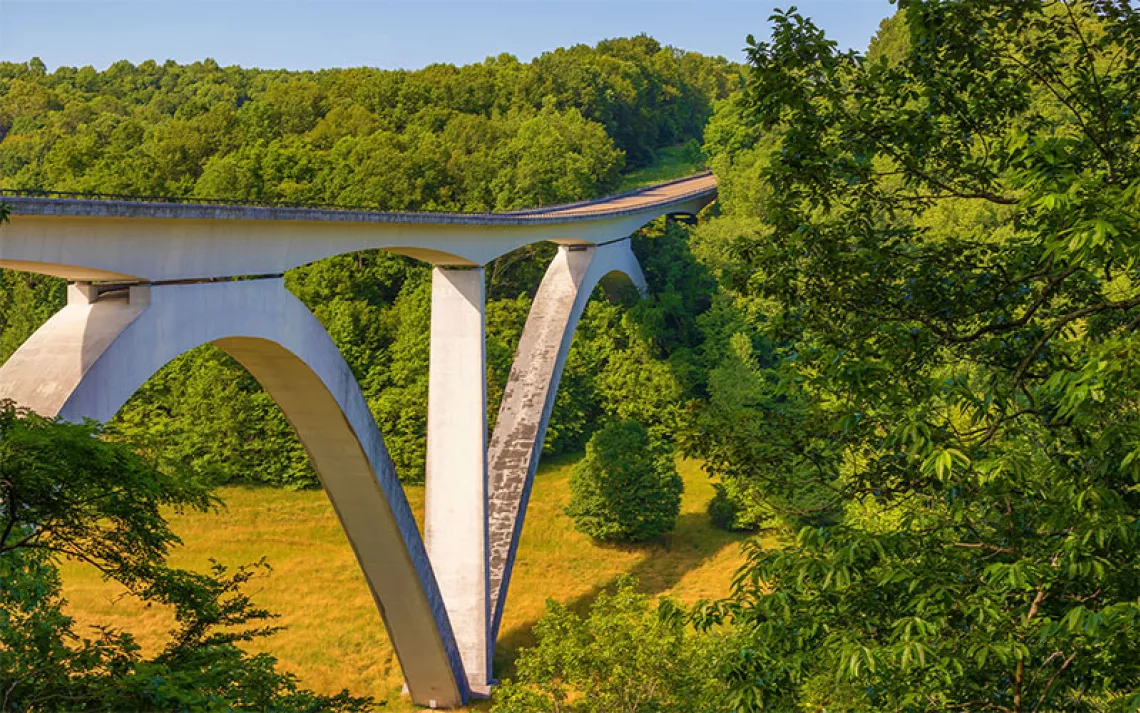The Native American Alliance to Protect the Grand Canyon
Southwest tribes put aside their differences to save common sacred ground
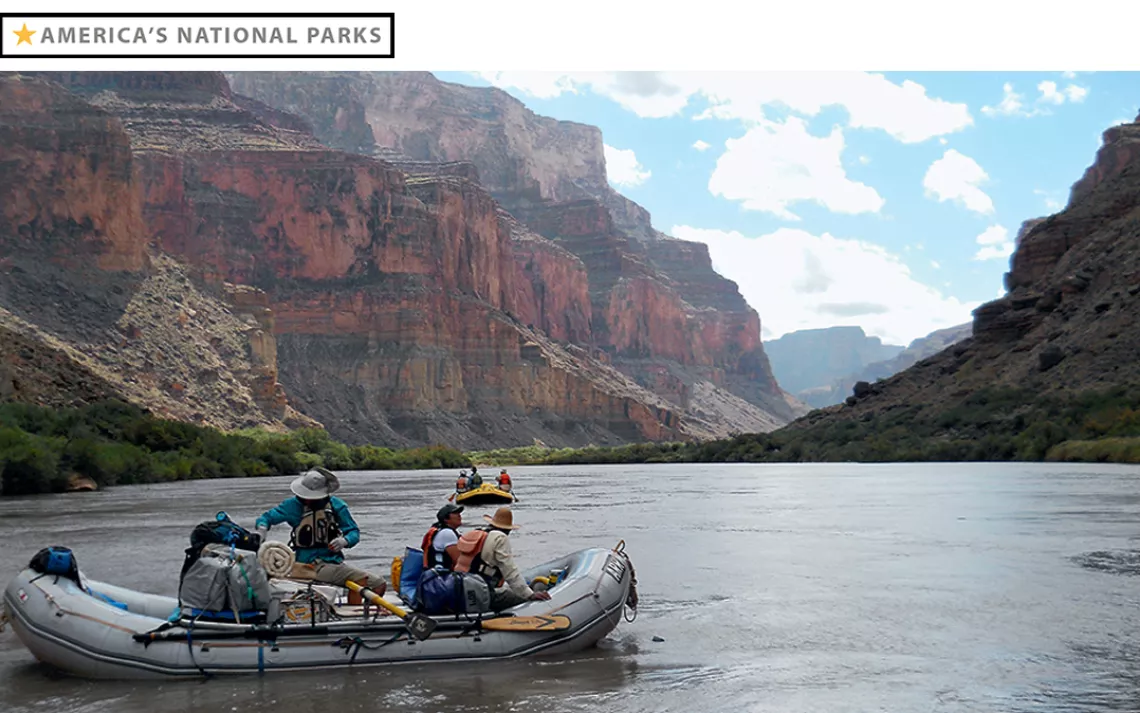
Rafting toward Nankoweap Creek and the granaries. | Photo by Tom Valtin
Top: The North Rim as viewed from Cape Royal overlook at sunset. | Photo by Ian Shive
"PULL THE RAFTS OVER HERE," directs Zuni elder Octavius Seowtewa, pointing to a sandbar on river right. We maneuver our flotilla—two paddle boats, half a dozen oar boats, and a monster 30-foot motorized raft—out of the powerful current and onto the beach.
Looming thousands of feet above us on either side are the multihued walls of the Grand Canyon. The Colorado River is cold as we step out of the boats, but the mid-September day is hot—a welcome change after 48 hours of chilly, spitting rain and damp clothing.
Seowtewa leads us along a faint, winding path through sand and scrub toward a jumble of ocher boulders atop a gentle rise. We squeeze through a defile in the rock, and suddenly, there they are: thousand-year-old petroglyphs, etched onto a huge sandstone slab. Seowtewa says that they depict the creation history of the "ancient ones" from whom the Ashiwi (or Zuni, as they are commonly known) are descended.
"The Grand Canyon is where the Ashiwi emerged into this world," Seowtewa explains. "Our oral history tells us this, and so do these petroglyphs. They show how we emerged from the canyon, took human form, and were directed to our middle place, the Zuni Pueblo in New Mexico. It's here in the canyon where our spirits will return. The Grand Canyon is our holy place."
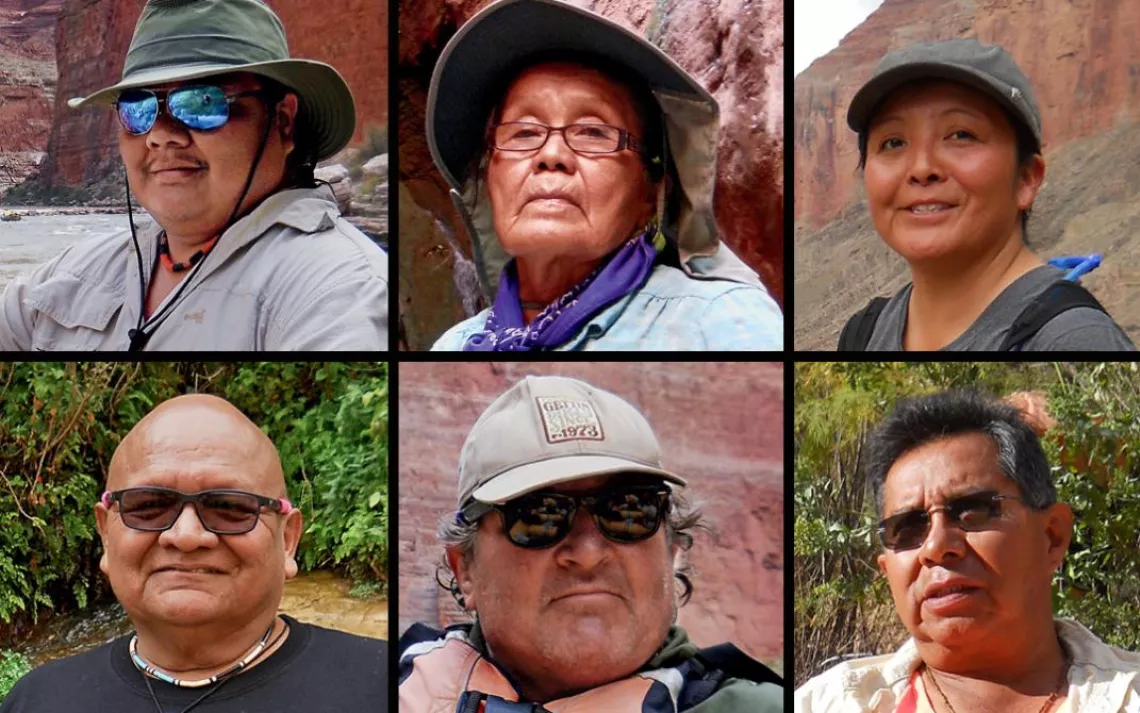
Bonded by the Colorado River (clockwise from top left): Bennett Wakayuta, Earlene Reid, Sarana Riggs, Octavius Seotewa, Lorenzo di Bonaventura, and Merv Yoyetewa. | Photos by Tom Valtin
TO SCOTTSDALE, ARIZONA developer R. Lamar Whitmer, the Grand Canyon is a place to make a whole lot of money. Whitmer wants to build a lavish $1 billion resort called Grand Canyon Escalade largely on Navajo Nation land adjacent to the national park. The project would include restaurants, hotels, stores, a trailer park, and a 1.4-mile tramway that would shuttle up to 10,000 visitors a day down to the confluence of the Colorado and Little Colorado Rivers. There, tourists could enjoy a restaurant, a gift shop, a visitor center, and an elevated river walk so they would never have to get their feet dirty or wet.
The issue has created a controversy among the Navajo. Supporters, including past Navajo Nation president Ben Shelly, claim it could bring much-needed jobs and $90 million a year in revenue. (At present, unemployment on the Navajo Nation is at 50 percent, and the Navajo economy is heavily dependent on coal mining and the operation of two large coal-fired power plants—the Navajo Generating Station and the Four Corners Power Plant.) The new Navajo Nation president, Russell Begaye, however, is adamantly opposed to the Escalade project.
Today, the area surrounding the confluence of the Grand Canyon rivers is entirely undeveloped. It is held sacred not only by the Zuni but also by the Navajo, the Hopi, the Hualapai, the Kaibab-Paiute, and other native peoples of the region, and is accessible only by a grueling, 19-mile trail from the canyon rim—or by running the river.
Our group of tribal and environmental leaders has chosen the river option. The trip is sponsored by Lorenzo di Bonaventura, a film producer and longtime river runner (and my chum since nursery school), and led by Robby Pitagora, an environmental activist and CEO of Rivers & Oceans, a travel company, plus his crew of nine seasoned river rats.
"The objective is to help foster an intertribal alliance opposing Escalade," Pitagora told me over tacos in Flagstaff the night before the trip. Relations between the area's tribes have not always been harmonious, so the atmosphere is a little charged. "The rest of us are here to learn and then put our muscle behind tribal campaigns like Save the Confluence. This isn't an Anglo thing; it's a Native thing."
More than 1.2 million acres are protected within Grand Canyon National Park. But national forest and Bureau of Land Management holdings outside the park boundary are vulnerable not just to developments like Escalade but also to uranium mining. The solution to that is the Greater Grand Canyon Heritage National Monument Act, which would protect 1.7 million acres of traditional tribal homeland on public lands not under tribal jurisdiction. It was unveiled last October 12—pointedly, on Columbus Day—by Representative Raul Grijalva (D-Ariz.) and tribal leaders.
"The Grand Canyon is a place of unrivaled natural splendor, a vital source of water for the Havasupai people," Grijalva wrote on Facebook. "It is too precious to threaten with uranium-mining operations that contaminate water and poison land. That's why we need President Obama to use his powers as commander in chief to protect this natural treasure permanently."
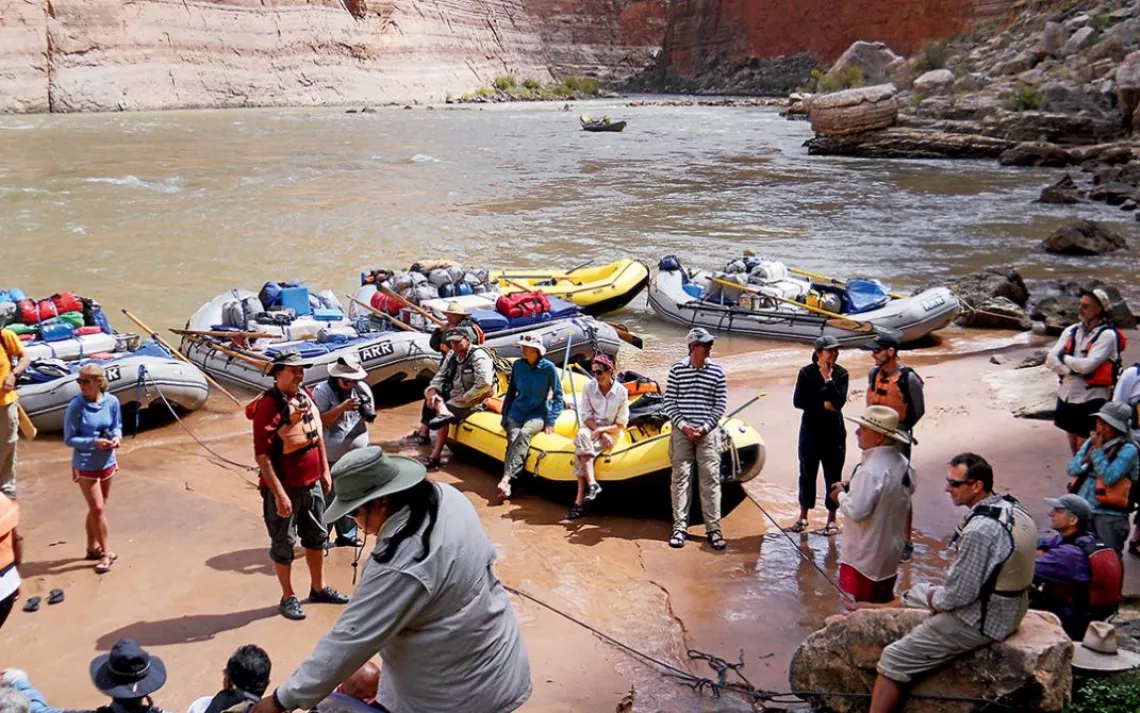
A lunchtime pullout and shady spot for the daily strategy session in the Grand Canyon. | Photo by Tom Valtin
"NO SWIMMERS!" di Bonaventura barks (meaning, "Don't fall out!") as our seven-person paddle boat shoves off into the current at Lees Ferry, Arizona, the classic starting point for rafting the canyon. The next spot reachable by road is more than 280 river miles from here. A veteran of 15 Grand Canyon runs, di Bonaventura has rafted on every inhabited continent except Australia and has three first descents to his credit. The Grand Canyon, he insists, is his favorite river run on Earth.
A mile downstream, we paddle uneventfully through Paria Riffle, a Class I rapid. Grand Canyon rapids are rated from I (a "holiday paddle," according to di Bonaventura) to X ("paddle for your life"). On my previous trip down the Colorado, in a one-person inflatable kayak, I had charged confidently into Paria, promptly flipped, and had become separated from my craft and my paddle. A repeat performance at Badger Creek ended with such violent "hydraulics" (churning water circulating on top of itself) that I was unable to find the surface. When I finally did, I was immediately slammed back underwater before I was able to take a breath. I flipped again three rapids later at House Rock and was carried into a "hole," where water flowing over a ledge creates a swirling vortex that traps and holds objects—me, for example. I finally broke free of the whirlpool, and a long, dark, scary swim ensued. This is one badass sacred river.
A LITTLE OVER HALFWAY THROUGH THE TRIP, we make camp at the mouth of Nankoweap Creek, where a trail climbs steeply to a quartet of ancient Ancestral Puebloan granaries tucked into the cliffs. Once there, I plop myself down next to Merv Yoyetewa, a Hopi tribal council member who favors a purple Don't Worry, Be Hopi T-shirt.
"Any development inside the Grand Canyon is a bad idea," Yoyetewa says. "It's where we emerged from, and it's where we go back when we pass on. The area around the confluence is where our ancestors are buried—it's a gigantic grave site. Why would you want to build a tramway and commercial development in a cemetery?"
A little later, several of us walk to a nearby hilltop overlooking Nankoweap Rapid. Scampering ahead of the pack—as usual—is Earlene Reid, a wiry 65-year-old Navajo rancher who has grazing rights on the land where Confluence Partners LLC wants to build its Escalade rim village.
"It won't help the Navajo people like they say," she insists. "It will harm our land and our way of life, and almost all the profits will go to the developer, not the Navajo people." Asked how she feels about the proposed new national monument, she smiles. "I wish I was Obama," she replies impishly.
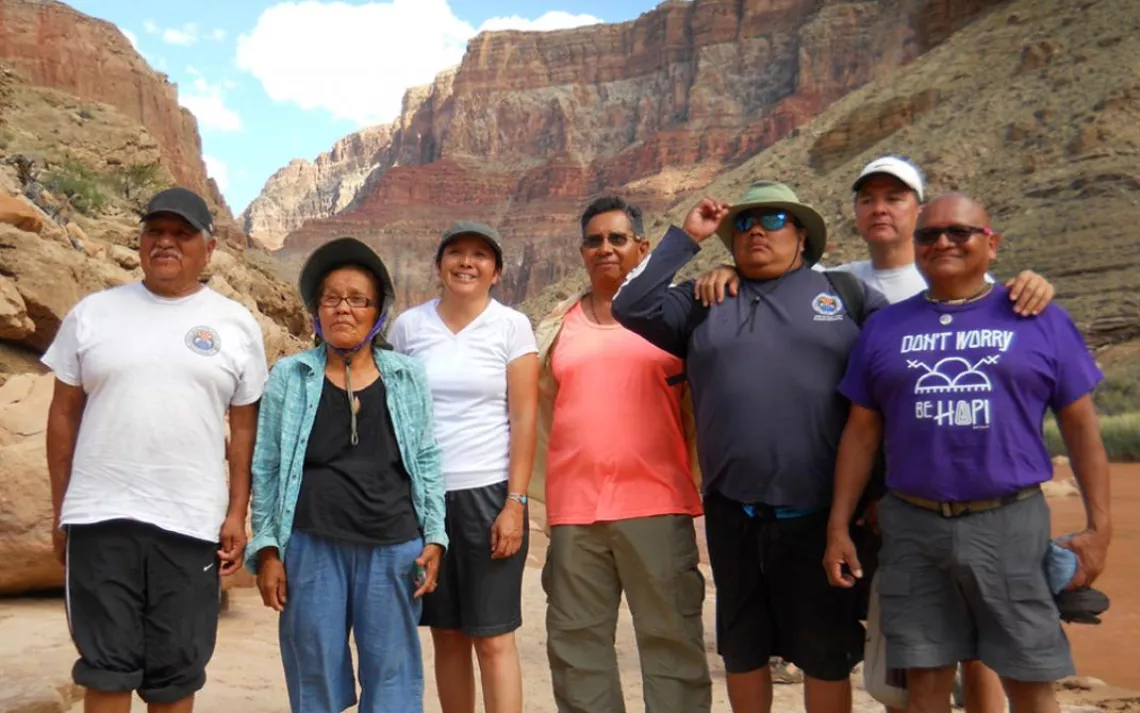
The group gathered at the confluence& | Photo by Tom Valtin
THE NEXT DAY WE REACH THE CONFLUENCE. The tribal leaders withdraw for a tobacco ceremony, after which Bennett Wakayuta, a Hualapai and former river guide who now works for the Hualapai Department of Cultural Resources, produces a leather pouch and gives everyone a handful of white cornmeal to scatter in the water. He then leads the tribal leaders in song. After a moment of silence, they speak.
"We believe this confluence is where the man and the woman meet," Wakayuta says. "The Little Colorado and Colorado Rivers represent this meeting and merging of equals." In addition, he says, there are "doorways" for the Hopi and the Hualapai in the canyon. "The Grand Canyon is our emergence area—our sipapu. Our elders tell us all the doorways connect, like an underground river, and the Hualapai, Hopi, and Zuni are all connected."
Sarana Riggs, the volunteer coordinator for the Grand Canyon Trust, who is of Navajo and Apache descent, worked as a volunteer on Russell Begaye's successful 2015 presidential campaign. She tells how Changing Woman, the creator of the Navajo people, passed this way on her journey to the ocean. "The significance of this place isn't just cultural; it's spiritual," she says. "Encroachments like the tramway cause irreparable harm. When something hurts the land, it hurts us. But tribes acting alone won't succeed. We have to unify. Octavius, Merv, Bennett, and I have committed to set aside our tribes' differences and present a unified front. And we have to work with nontribal groups, like the ones on this trip, who can help get the word out. That's the only way we can stop Escalade."
Riggs has to speak loudly to be heard over the wind that's whipping down-canyon. Seowtewa says the winds are the spirits of ancestors that dwell in the canyon, blessing our journey.
AS WITH ALL BIG RAPIDS, you can hear Hance well before you see it. But Hance's roar is an order of magnitude greater than anything we've heard on this trip. The rapid is named after the first non-Native American resident of the Grand Canyon. It is, according to River Runners for Wilderness, "one of a handful of difficult and legendary rapids where the run is rocky and the holes are many." The river drops 30 feet in half a mile, and the wave action is immense and chaotic. Hance is one of four Class X rapids in the canyon.
The last time I'd run this rapid, it chewed me up, spit me out, then swallowed me again before I finally emerged, gasping, from its clutches. Hearing its roar a good half mile away, I feel a prickly sensation run through me. My stomach tightens. Finally, I see the big waves leaping and colliding above the smooth tongue that leads into the heart of the rapid. I'm in my normal left-center spot on the pontoon. Wakayuta sits directly ahead of me at left front. As we approach the tongue, the woman across from me sees what's coming and murmurs, "Oh my god."
"OK, let's go!" yells di Bonaventura, and we dig our paddles in. Four deep strokes, maybe five, and we're in the maelstrom, giant waves crashing into us from all sides. "Let's go! Let's GO! LET'S GO!" di Bonaventura bellows as the world around us goes crazy. We're in a monstrous hydraulic pinball machine. A massive wave rears up on our left, and we throw all our weight toward it, digging our paddles into its face so as not to get flipped. No sooner are we through it than an even bigger wall of water smashes into us from the right, knocking me backward and momentarily blinding me. "LET'S GO!" di Bonaventura screams over the roar. A gigantic wave hits us head-on, lifts us into the air, and deposits us into a pit with a shudder. Menacing towers of water rear up all around; giant breakers of frothing pandemonium toss us violently to and fro. We're not going to make it. Hance is too powerful, too frenzied, too much. We're outmatched.
And then, somehow, we're through. Wakayuta lets loose a big belly laugh. We whoop and holler and clack the blades of our paddles together in a river high five.
IT'S OUR LAST EVENING ON THE RIVER. After dinner, we go around the circle sharing reflections. The last person to speak is Barney "Rocky" Imus, a Vietnam veteran and Hualapai tribal council member. A few minutes earlier, Jimi Hendrick, a former marine who has guided more than 200 trips down the Colorado, had spoken movingly about how the Grand Canyon, more than anywhere on Earth, is his home.
In manner and appearance, the dreadlocked, hard-swearing Hendrick and the formal, taciturn Imus are as unalike as one could imagine. "When I was asked to come on this trip, I really didn't know what to expect," Imus says. "I was uncertain about sharing my people's sacred places with others whose ancestors aren't from here. That's why I've stayed mostly quiet. I wanted to listen. I wanted to learn. And one thing I've learned is that this river—this place—makes us all brothers and sisters.
"Jimi is my brother; we'll always be brothers because we've served. But everyone here is bonded now by what we've shared and what we've seen and done this week. The river and the canyon have spoken to all of us. They've united us. They've worked their magic on us. And just as the river is the backbone of the canyon, it's the backbone of our alliance. And our alliance is strong."
###
Read more at Save the Confluence, a coalition organized by Navajo activists to promote cultural and environmental conservation at the confluence of the Colorado and Little Colorado Rivers.
What You Can Do
The Grand Canyon watershed is home to a unique array of native wildlife, hundreds of creeks and springs that millions of people rely on for drinking water, and thousands of acres of ancient forest — including the Southwest’s largest unprotected old-growth ponderosa pine forest.
Tribes in the area, especially the Navajo Nation, Havasupai, Hualapai, and Hopi, have come together to help protect a region that is sacred. Right now, this natural and cultural treasure faces threats from many fronts — from unsafe uranium mining to devastating logging practices. There’s only one way to preserve the sanctity of these 1.7 million acres for generations to come: name it as a national monument.
 The Magazine of The Sierra Club
The Magazine of The Sierra Club

